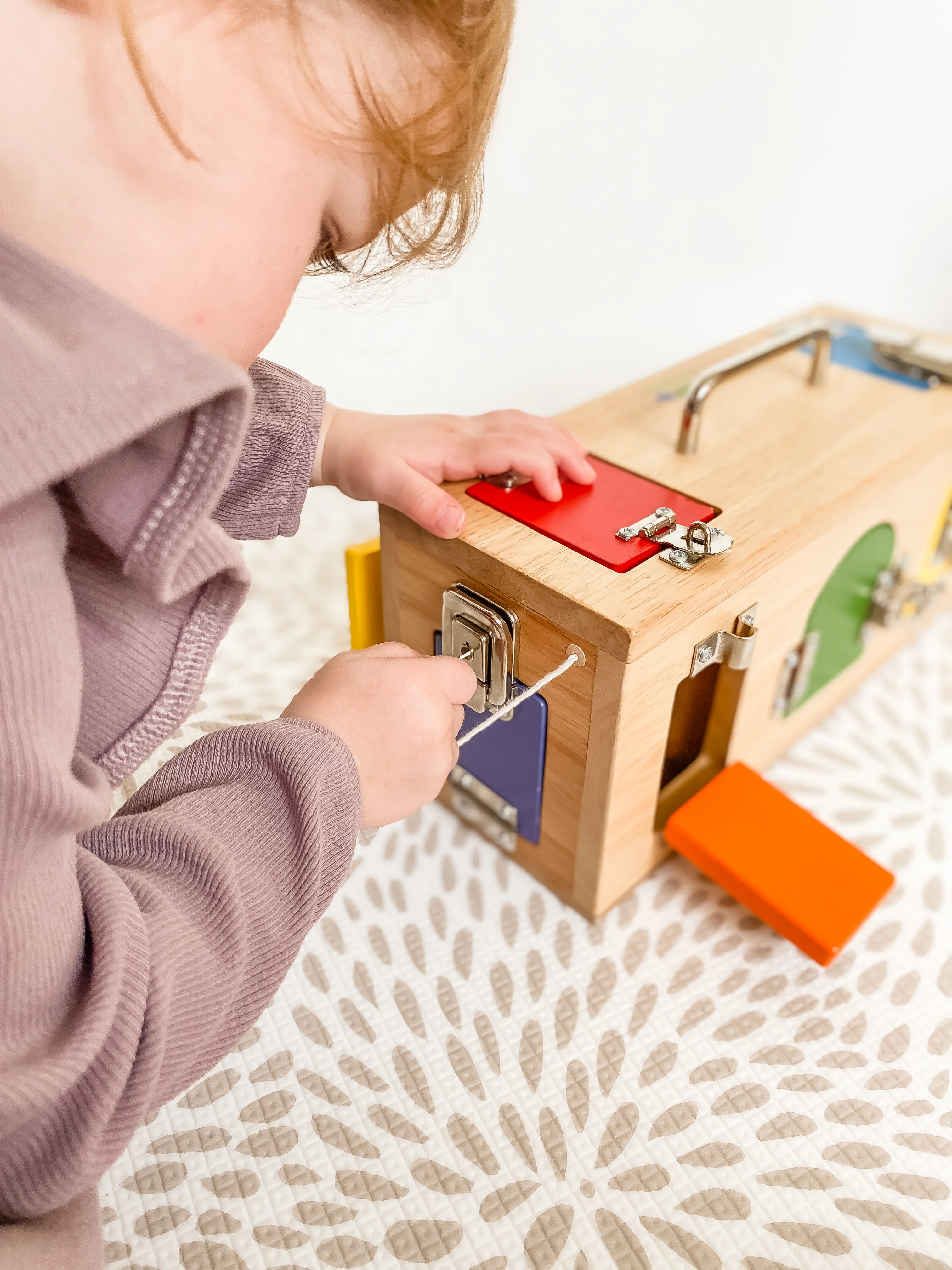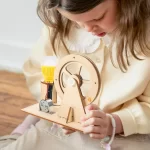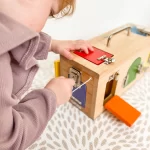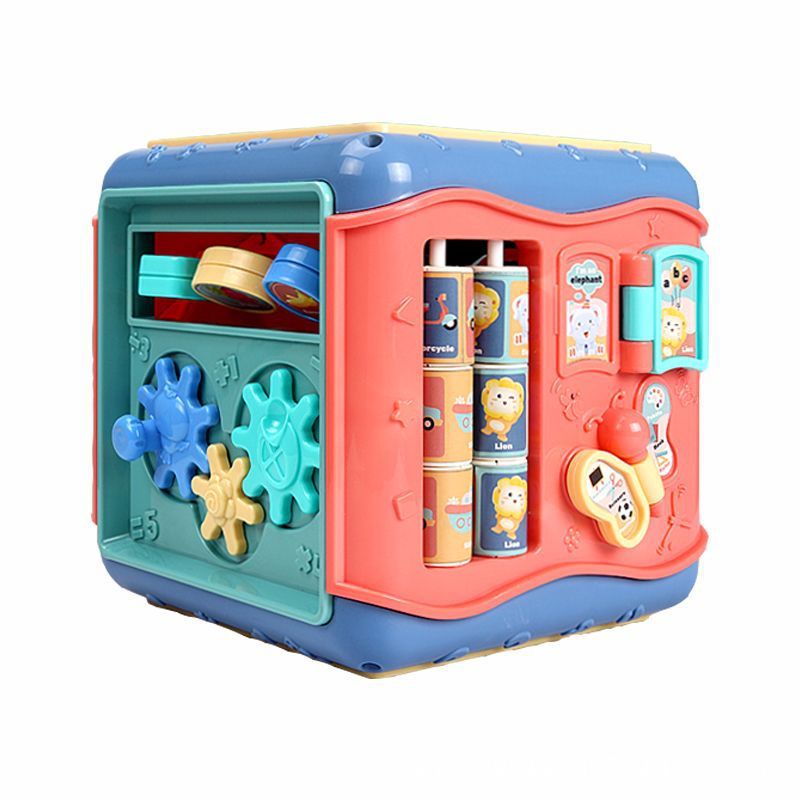Welcome to your 10-minute reading experience about Montessori lock boxes! I’ll take you through what they are, their developmental benefits, how to use them, and some DIY ideas to create your own.
What Are Montessori Lock Boxes?
Montessori lock boxes (also called lock boards or busy boards) are hands-on learning tools featuring various locks, latches, and fasteners that children can manipulate. They stem from Maria Montessori’s philosophy of learning through sensorial exploration and practical life activities.
These boxes or boards typically contain:
- Different types of locks (padlocks, combination locks)
- Latches and hooks
- Zippers and buttons
- Clasps and buckles
- Sliding bolts and chains
Developmental Benefits
Fine Motor Skills
Lock boxes require precise finger movements and hand-eye coordination. Children develop dexterity as they twist keys, manipulate latches, and work with small mechanisms.
Problem-Solving
Each lock presents a unique challenge requiring different approaches. Children learn cause and effect while developing logical thinking as they determine how each mechanism works.
Concentration
Working with locks naturally encourages focus and persistence as children must stay with a task until completion.
Independence
Mastering locks gives children practical skills they can apply to everyday items while building confidence through accomplishment.
Preparation for Practical Life
These activities indirectly prepare children for managing zippers on clothing, opening containers, and handling other everyday fasteners.
Using Lock Boxes Effectively
The beauty of Montessori lock boxes is in their simplicity of use but depth of learning. Here are some approaches:
- Follow the child’s interest: Introduce the lock box without demonstration and observe which elements attract their attention.
- Progressive challenge: For younger children, start with simpler mechanisms like large latches before moving to more complex locks.
- Treasure hunts: Place small rewards behind different locks to encourage completion.
- Daily practice: Incorporate as part of regular play rather than a special occasion activity.
Age Appropriateness
- 18-24 months: Simple latches, large buttons, basic sliding mechanisms
- 2-3 years: Hooks, clasps, basic key locks
- 3-5 years: Combination locks, more complex mechanisms
- 5+ years: Multi-step locks, puzzles requiring sequential operations
Creating Your Own Lock Box
DIY lock boxes can be customized to your child’s developmental needs:
- Base materials: Use a wooden box, board, or even a sturdy cardboard box
- Gathering hardware: Collect various locks, latches, and fasteners from hardware stores
- Safety considerations: Ensure all edges are smooth, pieces are securely attached, and small parts can’t be removed
- Progression planning: Arrange mechanisms from simple to complex
Real-World Applications
Parents and educators report many benefits when children regularly engage with lock boxes:
- Increased patience with challenging tasks
- Improved ability to dress independently (managing buttons, zippers)
- Enhanced problem-solving approaches to everyday obstacles
- Greater hand strength for writing and other fine motor activities
- Pride in mastering practical skills
Beyond the Box
The concepts behind Montessori lock boxes extend to other activities:
- Dressing frames for practicing clothing fasteners
- Kitchen activities like opening containers
- Garden tasks involving tools with various mechanisms
- Household maintenance activities like changing batteries in toys
Conclusion
Montessori lock boxes represent a perfect intersection of play and development, offering endless fascination while building crucial skills. They embody the Montessori principle that children learn best through purposeful activity and hands-on exploration.
Whether purchased or homemade, these simple tools offer rich opportunities for development across multiple domains, truly unlocking children’s potential through play.
ges at their own pace. The joy on a child’s face when they successfully unlock a particularly challenging mechanism is a testament to the powerful learning that occurs through this simple yet ingenious tool.













